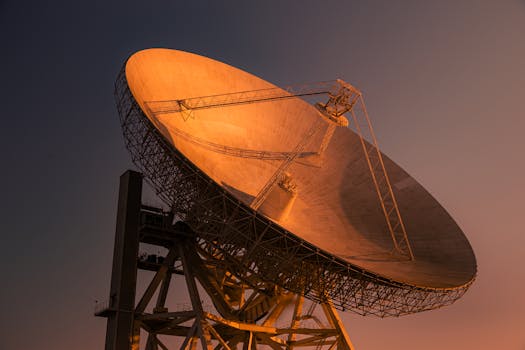Exploring GEO Satellites: Understanding the Technology and Applications

GEO Satellites: Introduction and History
GEO satellites, or Geostationary Earth Orbit satellites, have been a cornerstone of modern telecommunications for decades. The concept of a geostationary orbit was first proposed by scientist Arthur C. Clarke in 1945, and the first GEO satellite, Syncom 2, was launched in 1963. Since then, GEO satellites have become an essential component of global telecommunications, providing coverage to over 99% of the world’s population.
The technology behind GEO satellites is based on the principle of a geostationary orbit, where a satellite is placed at an altitude of approximately 36,000 kilometers above the equator, allowing it to maintain a fixed position relative to the Earth’s surface. This enables continuous coverage of a specific region, making GEO satellites ideal for applications such as telecommunications, broadcasting, and weather forecasting.
Functionality and Applications of GEO Satellites
GEO satellites are designed to provide a wide range of services, including telecommunications, broadcasting, and data transmission. They are equipped with transponders, which receive and retransmit signals to and from Earth stations, enabling communication between different regions. GEO satellites are also used for broadcasting, providing television channels, radio stations, and other multimedia services to a global audience.
In addition to telecommunications and broadcasting, GEO satellites have numerous other applications. They are used for weather forecasting, providing images and data on weather patterns, sea state, and other environmental conditions. GEO satellites are also used for navigation, enabling the provision of location-based services and precision timing.
Impact of GEO Satellites on the Telecommunications Industry
The impact of GEO satellites on the telecommunications industry has been significant. They have enabled the provision of global telecommunications services, connecting remote and underserved communities to the rest of the world. GEO satellites have also facilitated the growth of international trade and commerce, providing a reliable and efficient means of communication for businesses and organizations.
Furthermore, GEO satellites have played a crucial role in the development of modern telecommunications technologies, such as satellite broadband and mobile satellite services. They have also enabled the provision of emergency communications services, such as search and rescue operations and disaster response.
Challenges and Future Developments in GEO Satellite Technology
Despite the many advantages of GEO satellites, there are several challenges associated with their use. One of the main challenges is the limited availability of orbital slots, which can lead to congestion and interference. Additionally, GEO satellites are susceptible to space weather and other environmental factors, which can affect their performance and lifespan.
To address these challenges, researchers and manufacturers are developing new technologies and innovations in GEO satellite design and operation. These include the use of advanced materials and propulsion systems, as well as the development of more efficient and flexible transponder systems. Additionally, there is a growing interest in the use of non-geostationary orbit satellites, such as Low Earth Orbit (LEO) and Medium Earth Orbit (MEO) satellites, which can provide complementary services to GEO satellites.



